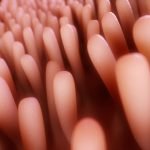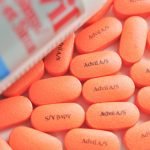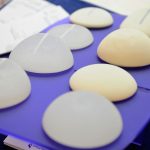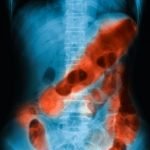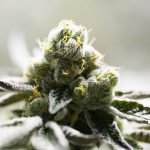Dextrose Prolotherapy: Naturopathic Regenerative Orthopedics – Part 1
Orthopedics
Noel Peterson, ND, DAAPM
Samuel G. Oltman, ND
We hold this truth to be self-evident: true health is dependent on the Vis Medicatrix Naturae. We embrace the term “regenerative orthopedics” because it specifically describes the mechanism of the care we provide. Naturopathic orthopedics enhances the Vis through the foundations of exercise, body mechanics, nutrition, botanicals, and mindfulness. In regenerative orthopedics, we coax the Vis to restore damaged tissue through the injection of proliferant substances and autologous biologic tissues and scaffolds. Part 1 of this article begins with naturopathic interventions, including dextrose prolotherapy, and will be followed by Part 2, which will focus on the use of autologous biologic tissues and scaffolds.
Regenerative Orthopedics & the Vis
We use the term “Orthopedic Medicine” (vs orthopedic surgery) to describe the scope and focus of this specialty because it most clearly describes how we practice in our clinic. Naturopathic influence is reflected in the American Association of Orthopaedic Medicine (AAOM) definition of Orthopaedic Medicine:
“The non-surgical practice of using integrative diagnosis and comprehensive treatment methods to provide relief to acute and chronic musculo-skeletal pain. It demands the use of a multi-faceted approach to treatment, including proliferant injections (prolotherapy, PRP [platelet-rich plasma]), osteopathic manual medicine, therapeutic exercise and supportive nutraceutical, herbal, pharmaceutical and homeopathic-based treatments.”
We build our musculoskeletal therapies upon these principles:
Tolle Causam
Evidence now supports the naturopathic tenet that osteoarthritis (OA) is a systemic, multifaceted condition dependent on aberrations of diet, nutrition, genetics, immunity, human microflora, obesity, body mechanics, and wear-and-tear.1,2 Yet the allopathic approach is largely limited to drugs and surgery. Regenerative orthopedic medicine’s emphasis on therapeutic exercise, dietetics, and supportive nutraceutical, hormonal, and botanical-based treatments addresses the cause of OA. Public demand is high for our evidence-based alternatives to surgery, non-steroidal anti-inflammatory drugs (NSAIDs), opiates, and cortisone shots to treat OA.
Obesity stands as one of the major preventable causes of knee and hip osteoarthritis (KOA and HOA) and progression to joint replacement. After adjustments for age, occupation, and the presence of OA of the hand, the odds ratios (OR) of total knee replacement (TKR) were 1.7 for overweight men and 5.3 for obese men. For total hip replacement (THR), the OR was 1.7 for obese men. For women, the OR of TKR was 1.6 for overweight women and 4.0 for obese women.3
The Standard American diet (SAD), along with metabolic syndrome and obesity, drives systemic inflammation and accelerates the progression of OA and pain severity. Approximately 10 000 Baby Boomers are turning 65 years of age every day. Almost 70% of all Baby Boomers are obese or overweight; an estimated 47.8 million Americans have some form of OA, and by 2030 that number is expected to rise to 67 million.4 In contrast to the SAD, a Mediterranean diet – rich in polyphenols, antioxidants, and PUFAs/MUFAs – has been shown to reduce both radiographic evidence and symptoms of KOA.5 This is likely due to its high content of fruits and vegetables, its inclusion of healthy fats, and its emphasis on herbs and spices with known anti-inflammatory effects.
Low levels of sex steroids contribute to degenerative KOA and HOA in both men and women. Low levels of testosterone, estradiol, progesterone, and DHEA are associated with more symptomatic OA and more severe structural abnormalities in both sexes.6-8 Barring individual contraindications, bioidentical hormone replacement therapy (HRT) is indicated in most Baby Boomers with OA.
Detection of heavy-metal burden is important, as silver, mercury, cadmium, and lead upregulate matrix metalloproteinases (MMPs) that trigger collagen and cartilage degradation. Elevated MMPs can reduce collagen synthesis by up to 50%.9
Docere
As naturopathic physicians, we treat more than just our patient’s joints. We hold an integrative first consult that identifies dietary and other risk factors for cardiovascular and metabolic disease, and we provide a plan for evidence-based, whole-body treatment of any conditions identified. We educate our patients about the overuse, dangers, and limitations inherent in the prevailing approach to orthopedics that relies exclusively on pharmaceuticals and surgery.
We counsel, coach, and integrate healthy eating, proper body mechanics, and therapeutic exercise with all our patients.
Exercise of nearly any type (except high-impact) increases collagen synthesis in the joint, helps regenerate cartilage, and prevents degeneration. Resistance training, in particular, has been shown to have a beneficial impact on OA symptoms and associated disability by improving functionality. Biking, swimming, yoga, and other low-impact activities all have benefit as well.10-12 Even the most disabled of our patients are able to implement some form of effective exercise. For example, in women, just 20 minutes of twice-weekly exercise will increase X-ray-measurable tibial cartilage volume.13 Pain and disability are strongly impacted by exercise. At Sweden’s Lund University, middle-aged men and women with a history of surgery for a degenerative meniscus tear participated in moderate physical activity of at least 3 times per week. Glycosaminoglycan (GAG) content increased significantly, and arthritis-related disability was reduced by 47%.14 Running and walking, although higher impact, have been shown to lower the rate of TKR and THR, but should be considered in light of the patient’s current level of fitness and history of physical activity.15
Primum Non-nocere
Regenerative orthopedics can reduce the use of harmful drugs and unnecessary surgery and is a clear example of do no harm. NSAIDs are the most commonly prescribed drug for OA, and Americans consume a staggering 30-billion doses per year! Well over half of rheumatologists and primary-care physicians use NSAIDs as a first-line treatment in symptomatic hip and knee OA.16 Unfortunately, in addition to the cardiac, gastrointestinal, and other morbidities, it is clear that many over-the-counter NSAIDS accelerate cartilage loss.17 Cartilage cells compose less than 3% of cartilage volume, while the extracellular matrix (ECM) accounts for over 96% of cartilage volume. GAGs compose the majority of the ECM, and many NSAIDs, including ibuprofen, inhibit GAG synthesis by as much as 80%. NSAIDs more than double the rate of radiographic deterioration of cartilage in knee joints, fast-tracking unaware patients to TKR.18 The routine use of NSAIDs in youth sports may be one reason why younger Americans are getting large-joint OA. Younger patients are not good candidates for TKR or THR due to the insufficient durability of implants.
Providing safe alternatives to NSAIDs can reverse the insidious effect of these drugs. The combination of curcumin and boswellic acid has been shown to be effective in the treatment of OA-associated pain, and without any of the side effects of NSAIDs.19 Quercetin alone has been shown to lower synovial inflammatory markers, and in combination with glucosamine and chondroitin, has Level 1 evidence for improving OA pain, mobility, and collagen synthesis.20,21 Adequate vitamin D is associated with knee pain reduction and increased quadriceps strength.22 The evidence for glucosamine/chondroitin has weathered large-scale meta-analysis and shows a small benefit in slowing OA progression, which may indicate the importance of addressing the underlying inflammatory process as opposed to solely replacing collagen-building blocks.23
Hyaluronate injections have been shown to be helpful in managing KOA pain; however, they do not modify the cartilage degenerative process at the heart of OA. Corticosteroid injections are the mainstay treatment in the orthopedic community, despite their well-known destructive effect on cartilage and connective tissue. Corticosteroid injections are proven to fast-track KOA to joint replacement.24
Surgery for OA
Surgery is the mainstay of conventional treatment for OA, but is often unnecessary and carries a high morbidity. Kirkley et al (2008) have provided Level 1 evidence suggesting that arthroscopic knee debridement surgery is no better than physical therapy and pharmaceuticals for the treatment of OA of the knee. Dr J. Bruce Mosley reported in the New England Journal of Medicine, as early as 2002, that sham arthroscopic surgery was as effective as debridement, repair, and full arthroscopic surgery in KOA.25 Yet more than 600 000 arthroscopic surgeries for OA continue to be performed yearly in America. Meniscectomies have been shown to not only be ineffective, but also to result in a 3-fold increase in the progression to TKR.26 As a result, the American College of Sports Medicine recently recommended against meniscectomies, calling instead for physical therapy and time as the best practice for treatment of meniscus tears.
The US Department of Health and Human Services (DHHS) reported that 300 000 TKRs were performed in 1991. By 2017 that number had nearly tripled to 800 000. The unfortunate fact is that less than half of those TKRs were medically indicated. Dr Daniel Riddel of Virginia Commonwealth University followed 4800 KOA patients for 5 years; in 2014 he reported that only 44% of TKRs performed on this group could be deemed appropriate and medically necessary, while 34% were completely unjustified, and 22% were questionable at best.27 Yet, in spite of this evidence, over 800 000 TKRs were performed in 2017. And the TKR momentum continues: the DHHS projects that by 2030, over 3-million TKRs will be performed in the United States every year.
Dextrose Prolotherapy for OA
Naturopathic regenerative medicine has the potential to ease this staggering cost in human suffering and unnecessary knee replacement surgery. In the last 5 years alone, more than 4 Level-I evidence studies have been published demonstrating that regenerative injections are the most effective treatment identified for early osteoarthritis of the knee.28-30
Hypertonic dextrose prolotherapy is a safe, effective, and well-proven intervention in KOA. Classic dextrose prolotherapy relies on injecting a hypertonic solution of 10-15% dextrose, mixed with lidocaine or procaine, into the supporting joint structures and/or intra-articular space, and has been proven to stimulate repair of collagen surfaces, tendons, and ligaments. Many chronic pain conditions are caused by ligament instability. Dextrose prolotherapy directly treats ligament instability by strengthening ligaments and connective tissue. Dextrose prolotherapy is more effective than any combination of corticosteroid injection, exercise, and local anesthetic for OA pain.28
In 2016, Dr Gaston Topol et al demonstrated the ability of dextrose prolotherapy to regrow cartilage in patients with late-stage bone-on-bone knee OA who had been relegated to TKR.31 Using before-and-after fluorescent stains of cartilage tissue, arthroscopic mapping of bone-on-bone cartilage loss, biopsy, and subjective pain scores, 6 participants (1 female and 5 male) – median age of 71 years, WOMAC composite score of 57.5 points, and a 9-year pain duration – received an average of 6 dextrose injections and follow-up arthroscopy at 7.75 months. Blinded reviewers agreed that cartilage regrowth occurred in 19 of 54 zone comparisons in areas of the knee that had been completely denuded of cartilage. All KOA patients experienced significant improvement in pain and disability scores after 7 monthly dextrose treatments.31 Six additional studies on the chondrogenic benefits of dextrose prolotherapy have been published within the last 4 years, most of which simply involved the injection of supporting knee structures in addition to intra-articular prolotherapy solution.
Dextrose prolotherapy has also been demonstrated to be more effective than corticosteroid injections for OA of the first metacarpophalangeal (MCP) joint, improving pain and grip strength with only 3 injections.29 Dextrose prolotherapy has applications for virtually every joint in the body and has been shown to be safe and effective.
Conclusion
OA is a debilitating condition, the morbidity of which will only increase in coming years. Regenerative orthopedics and the associated injection therapies are effective, safe, and utilize the body’s own healing power to accomplish the restoration of natural function. Movement is a primary need for the human body and mind, and essential for optimal health. Therefore, reducing the pain and joint dysfunction and restoring movement should be a priority for every physician. Dextrose prolotherapy should be considered when evaluating patients for joint pain and musculoskeletal dysfunction. Naturopathic regenerative orthopedics is the Vis Medicatrix Naturae at work, and can help patients continue moving throughout their lives.
In Part 2 we will focus on the use of autologous biologic tissues and scaffolds.
References:
- Veronese N, Shivappa N, Stubbs B, et al. The relationship between the dietary inflammatory index and prevalence of radiographic symptomatic osteoarthritis: data from the Osteoarthritis Initiative. Eur J Nutr. 2017 Dec 5. doi: 10.1007/s00394-017-1589-6. [Epub ahead of print]
- Courties A, Sellam J, Berenbaum F. Metabolic syndrome-associated osteoarthritis. Curr Opin Rheumatol. 2017;29(2):214-222.
- Franklin J, Ingvarsson T, Englund M, et al. Natural history of radiographic hip osteoarthritis: A retrospective cohort study with 11-28 years of followup. Arthritis Care Res (Hoboken). 2011;63(5):689-695.
- Hootman JM, Helmick CG. Projections of US prevalence of arthritis and associated activity limitations. Arthritis Rheum. 2006;54(1):226-229.
- Veronese N, Stubbs B, Noale M, et al. Adherence to the Mediterranean diet is associated with better quality of life: data from the Osteoarthritis Initiative. Am J Clin Nutr. 2016;104(5):1403-1409.
- Boyan BD, Hart DA, Enoka RM, et al. Hormonal modulation of connective tissue homeostasis and sex differences in risk for osteoarthritis of the knee. Biol Sex Differ. 2013;4(1):3.
- Hussain SM, Cicuttini FM, Giles GG, et al. Relationship between circulating sex steroid hormone concentrations and incidence of total knee and hip arthroplasty due to osteoarthritis in men. Osteoarthr Cartil. 2016;24(8):1408-1412.
- Jin X, Wang BH, Wang X, et al. Associations between endogenous sex hormones and MRI structural changes in patients with symptomatic knee osteoarthritis. Osteoarthr Cartil. 2017;25(7):1100-1106.
- Goldberg RL, Kaplan SR, Fuller GC. Effect of heavy metals on human rheumatoid synovial cell proliferation and collagen synthesis. Biochem Pharmacol. 1983;32(18):2763-2766.
- Hunter DJ, Eckstein F. Exercise and osteoarthritis. J Anat. 2009;214(2):197-207.
- Roos EM, Dahlberg L. Positive effects of moderate exercise on glycosaminoglycan content in knee cartilage: a four-month, randomized, controlled trial in patients at risk of osteoarthritis. Arthritis Rheum. 2005;52(11):3507-3514.
- Latham N, Liu CJ. Strength training in older adults: the benefits for osteoarthritis. Clin Geriatr Med. 2010;26(3):445-459.
- Hanna F, Teichtahl AJ, Bell R, et al. The cross-sectional relationship between fortnightly exercise and knee cartilage properties in healthy adult women in midlife. Menopause. 2007;14(5):830-834.
- Roos EM, Dahlberg L. Positive effects of moderate exercise on glycosaminoglycan content in knee cartilage: a four-month, randomized, controlled trial in patients at risk of osteoarthritis. Arthritis Rheum. 2005;52(11):3507-3514.
- Williams PT. Effects of running and walking on osteoarthritis and hip replacement risk. Med Sci Sports Exerc. 2013;45(7):1292-1297.
- Deshpande BR, Katz JN, Solomon DH, et al. Number of Persons With Symptomatic Knee Osteoarthritis in the US: Impact of Race and Ethnicity, Age, Sex, and Obesity. Arthritis Care Res (Hoboken). 2016;68(12):1743-1750.
- Lavie CJ, Howden CW, Scheiman J, Tursi J. Upper Gastrointestinal Toxicity Associated With Long-Term Aspirin Therapy: Consequences and Prevention. Curr Probl Cardiol. 2017;42(5):146-164.
- Dingle JT. The effects of NSAID on the matrix of human articular cartilages. Z Rheumatol. 1999;58(3):125-129.
- Haroyan A, Mukuchyan V, Mkrtchyan N, et al. Efficacy and safety of curcumin and its combination with boswellic acid in osteoarthritis: a comparative, randomized, double-blind, placebo-controlled study. BMC Complement Altern Med. 2018;18(1):7.
- Chen S, Jiang H, Wu X, Fang J. Therapeutic Effects of Quercetin on Inflammation, Obesity, and Type 2 Diabetes. Mediators Inflamm. 2016;2016:9340637.
- Kanzaki N, Saito K, Maeda A, et al. Effect of a dietary supplement containing glucosamine hydrochloride, chondroitin sulfate and quercetin glycosides on symptomatic knee osteoarthritis: a randomized, double-blind, placebo-controlled study. J Sci Food Agric. 2012;92(4):862-869.
- Javadian Y, Adabi M, Heidari B, et al. Quadriceps Muscle Strength Correlates With Serum Vitamin D and Knee Pain in Knee Osteoarthritis. Clin J Pain. 2017;33(1):67-70.
- McAlindon TE, LaValley MP, Gulin JP, Felson DT. Glucosamine and chondroitin for treatment of osteoarthritis: a systematic quality assessment and meta-analysis. 2000;283(11):1469-1475.
- Mcalindon TE, Lavalley MP, Harvey WF, et al. Effect of Intra-articular Triamcinolone vs Saline on Knee Cartilage Volume and Pain in Patients With Knee Osteoarthritis: A Randomized Clinical Trial. JAMA. 2017;317(19):1967-1975.
- Moseley JB, O’Malley K, Petersen NJ, et al. A controlled trial of arthroscopic surgery for osteoarthritis of the knee. N Engl J Med. 2002;347(2):81-88.
- Rongen JJ, Rovers MM, van Tienen TG, et al. Increased risk for knee replacement surgery after arthroscopic surgery for degenerative meniscal tears: a multi-center longitudinal observational study using data from the osteoarthritis initiative. Osteoarthritis Cartilage. 2017;25(1):23-29.
- Riddle DL, Jiranek WA, Hayes CW. Use of a validated algorithm to judge the appropriateness of total knee arthroplasty in the United States: a multicenter longitudinal cohort study. Arthritis Rheumatol. 2014;66(8):2134-2143.
- Hung CY, Hsiao MY, Chang KV, et al. Comparative effectiveness of dextrose prolotherapy versus control injections and exercise in the management of osteoarthritis pain: a systematic review and meta-analysis. J Pain Res. 2016;9:847-857.
- Jahangiri A, Moghaddam FR, Najafi S. Hypertonic dextrose versus corticosteroid local injection for the treatment of osteoarthritis in the first carpometacarpal joint: a double-blind randomized clinical trial. J Orthop Sci. 2014;19(5):737-743.
- Hauser RA, Lackner JB, Steilen-Matias D, Harris DK. A Systematic Review of Dextrose Prolotherapy for Chronic Musculoskeletal Pain. Clin Med Insights Arthritis Musculoskelet Disord. 2016;9:139-159.
- Topol GA, Podesta LA, Reeves KD, et al. Chondrogenic Effect of Intra-articular Hypertonic-Dextrose (Prolotherapy) in Severe Knee Osteoarthritis. PM R. 2016;8(11):1072-1082.
Image Copyright: <a href=’https://www.123rf.com/profile_edwardolive’>edwardolive / 123RF Stock Photo</a>
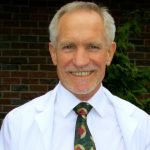 Noel Peterson, ND, DAAPM, has practiced in Lake Oswego, OR, since 1978, where he has provided decades of broad-based naturopathic medical care. Dr Peterson is the medical director of Oregon Regenerative Medicine, is certified in prolotherapy by the AAOM, and is a diplomat of the AAPM. He has extensive teaching experience in regenerative medicine, and serves as faculty for the American Association of Orthopaedic Medicine’s prolotherapy. Oregon Regenerative Medicine (ORM) has served as a CNME-accredited residency training site as well as a site for multi-discipline physicians learning to perform platelet-rich plasma prolotherapy and stem cell therapy protocols developed at ORM.
Noel Peterson, ND, DAAPM, has practiced in Lake Oswego, OR, since 1978, where he has provided decades of broad-based naturopathic medical care. Dr Peterson is the medical director of Oregon Regenerative Medicine, is certified in prolotherapy by the AAOM, and is a diplomat of the AAPM. He has extensive teaching experience in regenerative medicine, and serves as faculty for the American Association of Orthopaedic Medicine’s prolotherapy. Oregon Regenerative Medicine (ORM) has served as a CNME-accredited residency training site as well as a site for multi-discipline physicians learning to perform platelet-rich plasma prolotherapy and stem cell therapy protocols developed at ORM.
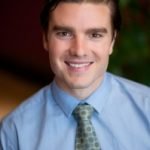 Samuel G. Oltman, ND, is a naturopathic physician specializing in regenerative orthopedics at Oregon Regenerative Medicine in Lake Oswego, OR. After graduating in 2015, Dr Oltman completed a 2-year CNME-accredited residency in SE Portland, focused on family medicine. He has since received specialized training in regenerative injection therapies at ORM as well as musculoskeletal ultrasound training, and is working toward his RMSKUS certification. In addition to orthopedics, Dr Oltman specializes in TBI evaluation and treatment, offering unique regenerative medicine-based modalities for concussion recovery.
Samuel G. Oltman, ND, is a naturopathic physician specializing in regenerative orthopedics at Oregon Regenerative Medicine in Lake Oswego, OR. After graduating in 2015, Dr Oltman completed a 2-year CNME-accredited residency in SE Portland, focused on family medicine. He has since received specialized training in regenerative injection therapies at ORM as well as musculoskeletal ultrasound training, and is working toward his RMSKUS certification. In addition to orthopedics, Dr Oltman specializes in TBI evaluation and treatment, offering unique regenerative medicine-based modalities for concussion recovery.




